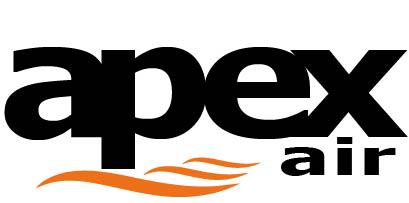
Adams & Coe sees the same story again and again: A small leak or clogged gutter turns into soaked drywall and warped floors. The good news is, most water damage is preventable with simple maintenance and a sharp eye for early warning signs.
Here’s how to protect your home or business before a drip becomes a disaster.
The Leading Causes of Water Damage
- Severe weather: Heavy rain and high winds can lift shingles, force water under flashing and overwhelm drainage. Properties in low spots face added risk from surface flooding.
- Clogged gutters and downspouts: Leaves and grit block flow, so water spills over the eaves and runs down walls. Over time it seeps into framing, basements and crawlspaces.
- Leaking or burst pipes: A loose trap under a sink can rot a cabinet. A pinhole leak in a wall can feed hidden mold. Frozen lines and excessive water pressure are frequent culprits.
- Appliance failures: Supply hoses on washers, water heaters and dishwashers can split without warning. Old rubber or PVC lines are especially vulnerable.
- Roof and ceiling leaks: Damaged shingles, cracked flashing and poor ventilation let moisture in. Drips often show up far from the source as stains or bubbling paint.
- HVAC condensation: A clogged condensate line or cracked drain pan will send water down walls or into ceilings.
- Blocked drains: Hair, grease or debris can back up sinks and tubs. The overflow that follows is more than a mess; it’s a fast path to warped floors.
- Sump pump failures: During storms, a failed pump can turn a dry basement into a wading pool.
Simple Prevention That Makes a Big Difference
- Clean gutters twice a year and confirm downspouts discharge well away from the foundation.
- Set water pressure to a safe range with a regulator, usually 40–60 psi.
- Replace old washer hoses with braided stainless steel and inspect annually.
- Service your HVAC and clear the condensate line at least once a year.
- Insulate pipes in unheated areas and keep indoor temps at 55°F or higher in winter.
- Test your sump pump by pouring water into the pit, and consider a battery backup.
- Seal and caulk around roof penetrations and exterior openings after storms.
- Add leak sensors under sinks, behind appliances, near water heaters and in basements. Pair with an automatic shutoff valve for extra protection.
Safety Tips for When You’re Away From Home
- Do not start dishwashers or washing machines before leaving the house.
- Shut off the main water valve or close individual fixture valves before long trips.
- Set heat to at least 55 degrees F in cold months.
- Ask a trusted neighbor to check for leaks if sensors alert you.
Spot Problems Early
Catching issues fast limits damage and cost. Watch for:
- Unexplained water bills
- Musty odors in closets or basements
- Stains on ceilings or at the tops of walls
- Warped baseboards or cupped flooring
- Intermittent running of the sump pump on dry days
If you notice any of these, act immediately. Turn off the water to the affected fixture or the main line, then call a professional to diagnose before conditions worsen.
What To Do if Water Damage Occurs
- Stay safe. Avoid wet outlets and sagging ceilings. If you suspect electrical hazards, turn off power to the area.
- Stop the source. Close the nearest shutoff valve or the main.
- Document the scene. Take photos and videos before cleanup.
- Begin drying. Remove standing water, run fans and dehumidifiers, and open windows when weather allows.
- Protect what you can. Move furniture, rugs and valuables to a dry space.
- Call your insurer. Ask about coverage and next steps for mitigation.
Strengthen Your Defenses
When repairing, choose materials that add resilience: mold-resistant drywall for basements, flood vents for crawlspaces, sealed foundation cracks and upgraded roofing with quality underlayment. Small upgrades now can prevent major losses later. Have you experienced water damage at your home or business? Contact the experts at Adams & Coe for professional restoration services.
